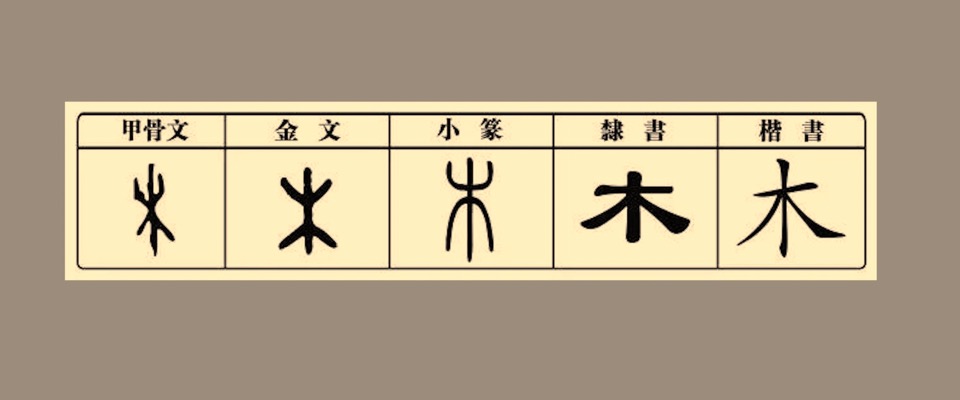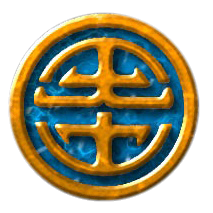Una Umanità Bambina
13/10/23 11:20 Filed in: cultura cinese

UNA UMANITA' BAMBINA Il carattere 木 Legno, Albero, in piccolo sigillo (quello al centro nella figura) è meraviglioso. Come nei due caratteri a sinistra, su ossa oracolari e su bronzo, anche in questo è evidente che nella rappresentazione dell'albero sia la chioma che le sue radici hanno uguale dignità e importanza. Quando storicamente si è reso necessario semplificare la scrittura (caratteri a destra) vediamo che, dovendo rinunciare a qualcosa, è stato scelto di ridurre la chioma, ma non si è tolto le radici! Radici che non si vedono. E infatti i bambini piccoli raramente disegnano le radici quando dipingono un albero, proprio perché non le vedono! Culturalmente è stata fatta la scelta di enfatizzare la sostanza e non l'apparenza: la radice delle cose. In occidente si trova un equivalente simbolico nell'Albero Celtico che ha le radici espanse e rigogliose come la chioma, anche negli intarsi antichissimi... Sarebbe bello che l'intera umanità (compreso i cinesi attuali) rivalutassero una visione più ampia e profonda della Vita, più lungimirante di quella di un adolescente impulsivo: una umanità saggia e non semplicemente bambina, che vede solo i rami. Altrimenti, senza questa "maturità" sarebbe meglio non "agire" (fegato legno).
Il 53° capitolo del Daodejing inizia con " Se mi affidassi a saggezza e naturalezza, camminando per la Grande Via avrei solo una paura, quella di agire".
Il carattere 施 che traduciamo come agire, ha anche il significato di eseguire, forzare, truccare, mettere qualcosa sopra, (come qundo ci si incipria il viso) e come bisillabo moderno diventa 施暴 "violentare".
Questo ricorrere alla violenza che ci caratterizza come umanità, dal microcosmo dei rapporti famigliari al macrocosmo del rapporto con la Madre Terra.
Se le azioni e gli interventi non hanno profonde radici nella Vita sono inevitabilmente distruttive, come vita breve ha un fiore reciso o un albero senza radici.
(Tratto da una discussione con un amico su legno, fegato e cistifellea, come primavera e azione, nella cultura e nella medicina cinese)
A CHILD HUMANITY The character 木 Wood, Tree, in a small seal (the one in the center of the figure) is wonderful. As in the two characters on the left, on oracle bones and on bronze, also in this one it is evident that in the representation of the tree both the foliage and its roots have equal dignity and importance. When historically it has become necessary to simplify the writing (characters on the right) we see that, having to give up something, it has been chosen to reduce the crown, but the roots have not been removed! Roots you can't see. And in fact, young children rarely draw roots when they paint a tree, precisely because they can't see them! Culturally, the choice was made to emphasize substance and not appearance: the root of things. In the West there is a symbolic equivalent in the Celtic Tree which has roots as expansive and luxuriant as the crown, even in the very ancient inlays... It would be nice if all of humanity (including the present Chinese) re-evaluated a broader and more profound vision of Life, more far-sighted than that of an impulsive teenager: a wise humanity and not simply a child, who only sees the branches. Otherwise, without this "maturity" it would be better not to "act" (liver wood).
The 53rd chapter of the Daodejing begins with "If I relied on wisdom and naturalness, walking the Great Way I would have only one fear, that of acting".
The character 施 that we translate as acting also has the meaning of executing, forcing, making up, putting something on, (like when powdering your face) and as a modern disyllable it becomes 施暴 "to rape".
This recourse to violence that characterizes us as humanity, from the microcosm of family relationships to the macrocosm of the relationship with Mother Earth.
If actions and interventions don't have deep roots in life, they are inevitably destructive, like a cut flower or a tree without roots has a short life.
(Taken from a discussion with a friend about wood, liver and gallbladder, as spring and action, in Chinese culture and medicine)
blog comments powered by Disqus
